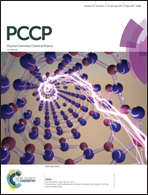What will freestanding borophene nanoribbons look like? An analysis of their possible structures, magnetism and transport properties
Abstract
We report a density-functional theory study of the stability and electronic structure of two recently proposed borophene sheets with Pmmn symmetry and nonzero thickness. We then investigate nanoribbons (BNRs) derived from these nanostructures, with particular attention to technologically relevant properties like magnetism and electronic transport. We consider two perpendicular directions for the edges of the stripes as well as different lateral widths. We show that the Pmmn8 sheet, with 8 atoms in its unit cell and generated by two interpenetrating lattices, has a larger binding energy than the Pmmn2 sheet, with only 2 atoms per unit cell. We also use their phonon spectra to show that the mechanical stability of the Pmmn8 sheet is superior to that of the Pmmn2 sheet. Nanoribbons derived from Pmmn8 are not only more stable than those derived from Pmmn2, but also more interesting from the technological point of view. We find a rich variety of magnetic solutions, depending on the borophene “mother structure”, edge orientation, width and, in the case of Pmmn8-derived BNRs, the sublattice of edge atoms. We show that one can build BNRs with magnetic moment in both, one or none of the edges, as well as with parallel or antiparallel magnetic coupling between the edges when magnetic; moreover, their electronic character can be semiconducting, metallic or half-metallic, creating a perfect spin valve at low bias. These different behaviors are reflected in their densities of states, spin density and electronic transport coefficients, which are analyzed in detail. Our work provides a complete overview of what one may expect if nanoribbons are cut out from Pmmn sheets with a view to potential technological applications.

- This article is part of the themed collection: 2017 PCCP HOT Articles


 Please wait while we load your content...
Please wait while we load your content...